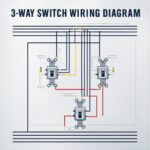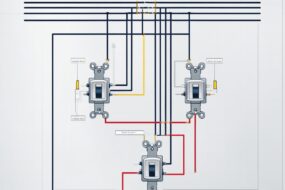
This device is widely used in construction, surveying and performing home improvement activities. It is a device that produces a light ray that sets a level or vertical line on any surface, so there is the alignment. It provides the level of accuracy and convenience compared to bubble levels or using strings. This paper focuses on the various types of Laser levels, their uses and the features that are relevant when it comes to choosing the right Laser level.
What is a Laser Level?
A laser level directs a instantly light on to a surface so as to make leveling and position work easier. The components include the laser diode, batteries, and internal leveling mechanism that is built into the existing device. It is to make a line guide or a dot guide in installation or positioning of an object or equipment. It is available in different forms to suit the kind of work expected from it, be it a small do it yourself job or a construction project.
Types of Laser Level
Lasers can be classified into many categories depending on the kind of laser level and its use and benefits. There are three classifications of lasers, namely; Dot lasers, Line lasers, and Rotary lasers.
Dot Laser Level:
Describe the method of throwing a single point on a given plane. Ideally used when moving points from one wall to another or fixing such points as electric sockets and switches. These are much smaller and that means they are more portable.
Line Laser Level:
Draw a horizontal or vertical line in a room. Most commonly employed as picture hangers, tile spacers or shelve levelers. There are models which may include the option to draw multiple line lasers for more professional use.
Rotary Laser Level:
With the cord, it produces a line that if spun 360 degrees is continuous around a given space. Designed to accommodate large construction and other outdoor related projects. Rotary lasers can be of extended range, and some models work with a receiver for more visibility in bright conditions.
Features to Consider
In other words, the decision on which laser level to purchase is based on considering the following characteristics. The criteria are features such as accuracy, range, self-leveling options, and visibility. These aspects mean that the tool corresponds to the requirements of particular assignments.
Accuracy:
You can often define the versatility of a laser level by the centimeters or millimeters per meter it can set. Greater accuracy leads to fewer mistakes during the work. When it comes to the critical projects, you should take a device with narrow tolerance level.
Range:
The range means the distance of the operation of the laser beam. Rotary lasers normally have the longest range, going well beyond 500 meters. Dot lasers and line lasers have a shorter range than standard flash lasers and work better in indoor environments.
Self-Leveling:
There are many models that come with a self leveling process where the tool corrects itself in minor issues. This saves time and energy on the preparation and also guarantees a more accurate final product than the traditional method of cutting out all around the shape and size of the pattern.
Visibility:
The intensity of the laser depends with the direction of the light beam and how bright it is to the close. Green lasers are generally visible than the red lasers, therefore preferred if used in a brightly lit location. Red lasers are less power requiring and better for indoor applications.
Applications of Laser Level
Laser levels are used in different fields in order to increase effectiveness and precision. Here are some common applications:
Construction:
Laser levels are common among builders in lying of foundations, putting up walls, and to level a surface. Rotary lasers become highly useful in large projects that involve leveling operations.
Home Improvement:
These tools are applied by DIY enthusiasts in places such as suspending shelves, fixing cabinets and tiling. At short to medium distances, 1D line lasers are the most useful for indoor applications.
Surveying and Landscaping:
Rotary lasers also help in the leveling of ground in outdoors and setting up of slopes and fences among others. They are efficient even within outdoor exposure due to the integration of a laser detector.
Plumbing and Electrical Work:
Laser levels help plumbers and electricians line pipes, ducts or wires. Dot lasers are ideal to mark a particular point or align electrical box etc.
Laser Level Uses
Laser levels also have several advantages which makes their usage better than conventional ways. They include the following: higher accuracy, convenience, and flexibility.
Precision:
Laser levels ensure high accuracy, minimizing errors caused by human intervention. They replace the conventional manual leveling which involves a lot of assumption and produce a standardized outcome.
Ease of Use:
These devices are easier to align as compared to more complicated instruments. Such tools also include self-leveling one, in which the tool selects the proper level for completion of the work, thereby giving out the project fast.
Versatility:
Different types of laser levels exist, and depending on the task at hand, you may need a simple handheld one for home use or a more complex one for construction work. They also can change from horizontal to vertical alignment and make it even more versatile.
Limitations and Considerations
However, laser levels are not without their flaw. Few limitations directly influence optimization, such as the availability of external lighting and the steadiness of the stand.
Lighting Conditions Laser Level:
We note that direct sunlight may reduce the visibility of the laser beam. In outdoor environments, we find that green lasers are brighter than any other type.
Mounting Surface Laser Level:
For better results, make sure the head is mounted to a stable platform. Even their self-leveling wheel sets may become uneven due to irregularity of the ground.
Battery Life Laser Level:
As a matter of fact, a product that is frequently used would need to have adequate battery power to power it. With rechargeable batteries, the need to have spare batteries is available but it is advisable to carry extra sources of power when attending to long projects.
Maintenance and Care
Keeping up good maintenance of a laser level is very important in order to extend the type of life of the equipment. Proper cleaning, proper storage, and also battery running can help to keep the device in perfect state.
Cleaning:
Clean the area of the laser lens with the body of the laser with a soft cloth to wash it. Do not use chemicals that can be detrimental to the lens of the eye.
Storage:
Always keep the laser level in a protective situation. And it must be stored in a cool, preferably dry and should not be exposed to dust.
Battery Care:
It’s also advisable to have it charged often or use a new pack of batteries depending on the one in use. Return batteries to the manufacturer for equality or simply take them out when not in use for quite some time to avoid corrosion.
Why It’s Important and How It Works Laser Level
Laser levels are classified according to the type of work, their cost and the features they come with. In simple home activities, line or dot laser may be sufficient. Higher accuracy and range should be preferred for professional use of rotary lasers.
Some of consideration includes where the project is going to be located, whether it is indoors or outdoors, and whether there are such additional options as remote control or number of lines. Such considerations keep one looking for a tool that best suits the job at hand thus resulting in better outcome and more efficiency.
Conclusion
Laser levels prove themselves as a necessity in today’s structure, craftsmanship, home decorating, and surveying. Due to their accuracy, simplicity and versatility they are very useful tools and should be part of any toolbox. Knowledge of the types, characteristics, and uses of this technology will therefore enable users to optimize on this in the achievement of their goals.








